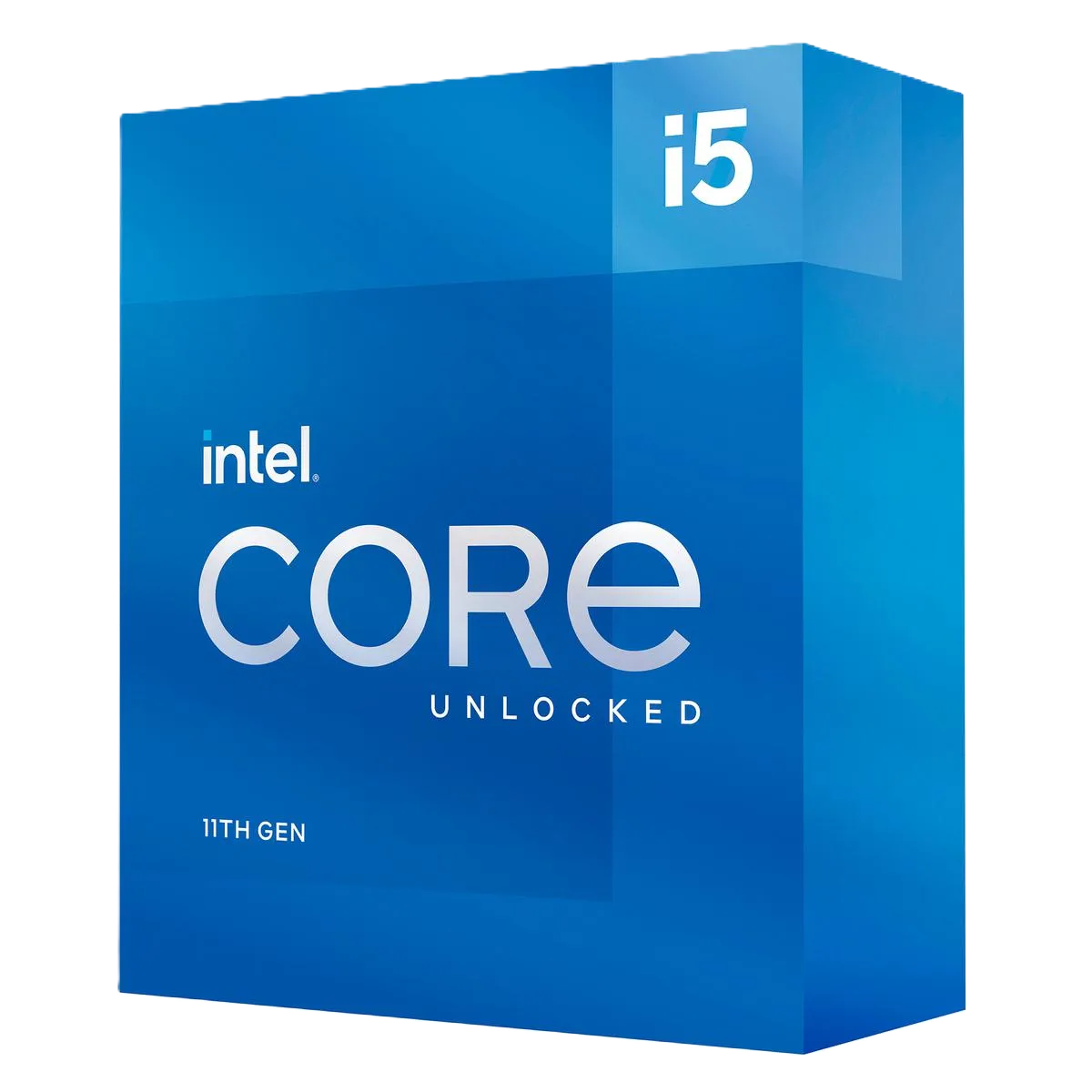
Intel
CPU
Intel Core i5-11600K
MSRP:
$139
Technical Specifications
Performance Core Clock
3.9 GHz
Performance Core Boost Clock
4.9 GHz
Base Clock
3.9 GHz
Boost Clock
4.9 GHz
L3 Cache
12
TDP
125W
Includes Cooler
No
Socket
LGA1200
Cores
6
Threads
12
Integrated Graphics
Intel UHD Graphics 750
Maximum Supported Memory
128GB DDR4-3200
ECC Support
No
SMT Support
Yes
Release Year
2021
MSRP
$139
Manufacturer
Intel
Pros & Cons
Pros
- Sufficient cores for gaming and basic productivity tasks
- Good for 1080p and 1440p gaming
- Good boost clocks handle gaming and applications well
- Good base clocks provide stable performance
- Reasonable power consumption for the performance level
- Unlocked multiplier allows for overclocking headroom
- DDR4 memory support offers good value and compatibility
- Integrated graphics enable system boot without dedicated GPU
- Good value proposition for the performance level
- Mainstream performance with strong price-to-performance ratio
- Ideal for gaming-focused builds with good upgrade potential
Cons
- Limited performance for 1440p gaming in demanding titles
- Poor 4K gaming performance, especially with background tasks
- End-of-life socket with no future upgrade options
- Higher power consumption and heat generation
- Pricing may not reflect age compared to newer alternatives
- Aging architecture may lack optimization for newest software
- Limited availability of new units, mostly second-hand market
Community Insights
- Still solid if you already own it—but don’t buy new.
Frequently Asked Questions
Is the Intel Core i5‑11600K still a good gaming CPU in 2025?
es—with 6 cores and 12 threads and solid boost clocks, the 11600K remains capable for gaming, especially if you already have an LGA 1200 system. It performs on par with the Ryzen 5 5600X in many titles, though it consumes noticeably more power—often 120–160 W vs ~60–85 W for the Ryzen.cpu-class performance in gaming—with efficiency being a key tradeoff.
Performance Guide & Use Cases
Best For
Office workstations and light productivity applications
Gaming-focused builds with minimal background tasks
Legacy system upgrades maintaining existing motherboard investment
Mainstream builds with proven memory compatibility
Enthusiast builds with advanced cooling setups
Entry-level systems for students and casual users
Enthusiasts with proper cooling and power delivery systems
HTPC builds and compact form factor systems
Potential Bottlenecks
May be limited by DDR4 memory bandwidth in memory-intensive applications
Requires adequate cooling solution to prevent thermal throttling (125W TDP)
May limit performance in heavily threaded applications (6 cores)
Legacy platform may limit memory speeds and PCIe lanes (LGA1200)
Overkill Scenarios
Always-on systems prioritizing low power consumption
Mini-ITX builds with stock cooling solutions (125W TDP)
Basic photo viewing and file management
Avoid For
New builds requiring PCIe 5.0 and latest connectivity (LGA1200)
Future-proofing for next 5+ years of computing
Budget builds avoiding aftermarket cooler costs
Prebuilt system upgrades without cooler replacement options
New builds prioritizing latest architecture features
4K gaming and demanding AAA titles at high settings
Software development with heavy compilation tasks
Multi-core value builds where AMD offers better price/performance
Silent computing environments and libraries
PCHelperAI may earn a commission from purchases made through affiliate links to participating retailers on this site. This compensation does not influence the products shown, pricing, or the order in which prices appear. For more details, please see our full disclosure.